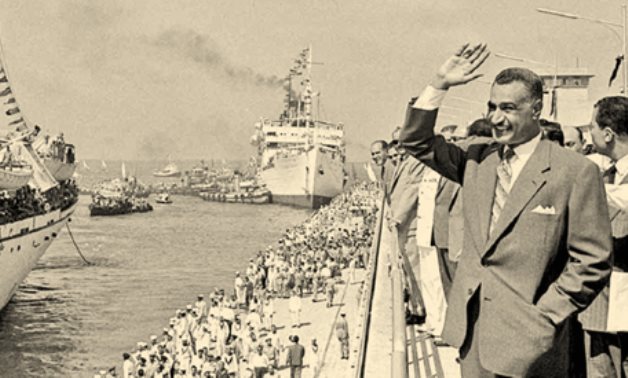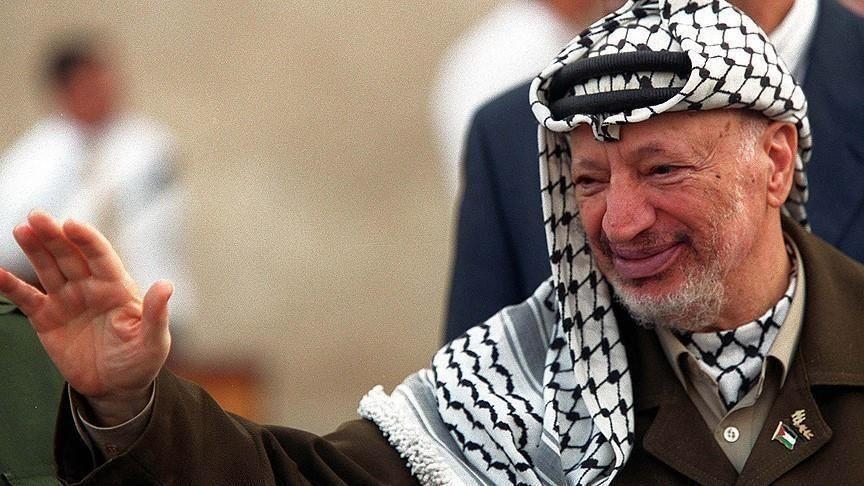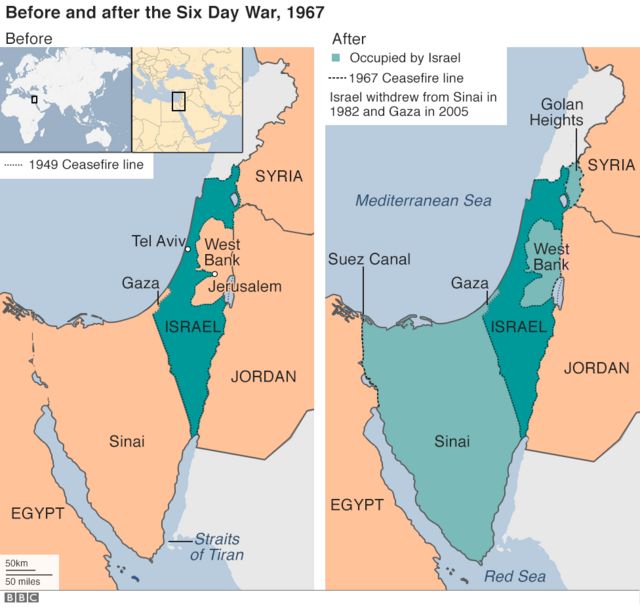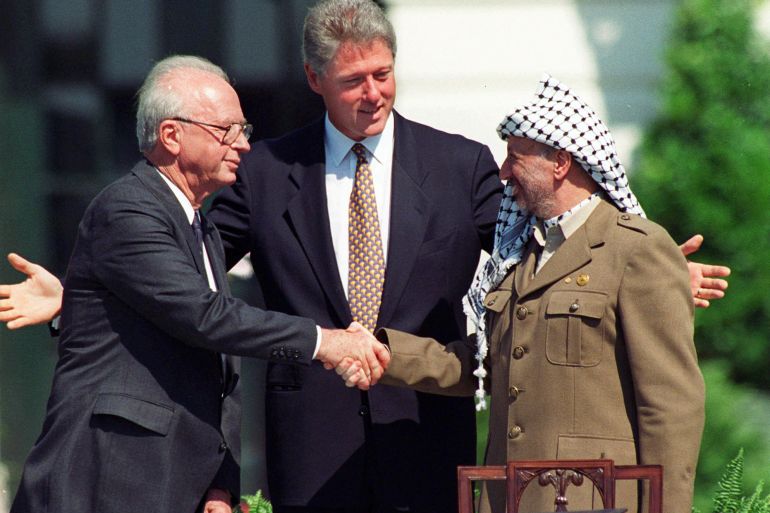Summary of ARAB-ISRAELI CONFLICTS since 1948
What you want to understand: 🤔
- What were the causes and consequences of the various Arab-Israeli wars?
- How do Israeli-Palestinian tensions impact the broader regional context?
- How do the PLO and the Hamas differ?
- Why have the several attempts to pacify relations between Israel and Palestinian populations fail?
Historical background
In 1916, with the prospect that the Ottoman Empire would be defeated in the course of the first World War, France and the United Kingdom signed the Sykes-Picot agreement to organise the partition of Ottoman territories. As you can see on the map, Palestine, that comprised what is currently known as Israel and Palestine, fell into the “international sphere”.

However, the Paris Peace Conference (1919) and the San Remo Conference (1920) gave the UK a direct mandate over Palestine.

In 1947, with the UK’s consent, the UN put an end to the British mandate over Palestine and presented a plan to create two independent States, one Arab and another one Jewish. Nonetheless, neighbouring Arab countries rejected the idea.

On May 14, 1948, Ben-Gurion announced the establishment of the State of Israel and became its first Prime Minister. He believed that Israel had to develop its power in order to speak on equal terms with its neighbours, which however would lead to a disruption of the regional balance of power and fuel tensions. Ben-Gurion also recognised that Palestinian Arabs who lived on what just became Israeli territories had a strong attachment to their land and that it was a great importance to ensure equality between them and the Jewish population.
I. The first Arab–Israeli War (1948-1949)
Between November 1947 and May 1948, a civil war broke out between Jewish and Palestinian Arab militias in Palestine. The latter were supported by neighbouring Arab States. Jewish populations labelled this episode as their “War of Independence”. Because of the Declaration of Independence on May 14, 1948, the war escalated into a war between Israel and neighbouring Arab States that had gathered in the Arab League (1945), which comprised Egypt, Jordan, Iraq, Syria, Lebanon, Saudi Arabia and Northern Yemen.
The war ended with the victory of Israel that captured 78% of the former British mandate. A Palestinian government was established by the Arab League in the Gaza Strip. One the main consequences of the war was the exodus of 720,000 Palestinians from Israel to Cisjordan (aka West Bank), the Gaza Strip, Jordan, Lebanon and Syria. At the same time, Jewish population from neighbouring countries moved to Israel.
The 1949 Armistice Agreements put an official end to the war and established the “Green Line” that separated the Israeli territory and West Bank where most Palestinians lived.

Throughout the Cold War, the US supported Israel but also financed Lebanon and Jordan (members of the Arab League), mainly to get access to their oil. As for the USSR, it spread anti-Israel propaganda and maintained close relations with Syria, Egypt, Turkey and Northern Yemen.
II. The second Arab–Israeli War: the Suez Crisis (1956)
In 1952, Gamal Abel-Nasser became President of Egypt and implemented nationalist policies aiming at getting Egypt out of European domination. That’s why in 1956 he nationalised the Suez Canal, which led to a military intervention by the British, the French and the Israelis that also feared Egypt’s growing regional influence.

It is worth mentioning that Nasser was close to the USSR, which represented a threat for Western powers. Nevertheless, the US didn’t intervene to help France and the UK because it held an anti-imperialist discourse in the context of the Cold War.
Nasser obtained a political victory and France and the UK lost most of their influence in the Middle East as a result of the war.
III. Creation of the Palestinian Liberation Organisation (PLO)
In the 1960s, Palestinian refugees in Arab States and those living on Israeli territories denounced the inefficiency of Arab States in fighting Israel and in defending their interests. Therefore, they decided to take up arms themselves.

In 1964, they created the Palestinian Liberation Organisation (PLO) under Yasser Arafat who was the leader of the Fatah political party. The PLO carried out guerrilla warfare and terrorist attacks. It demanded the following:
- return of Palestinian refugees to Israel
- unification of Palestinian territories
- liberation of territories occupied by Israel
- non-recognition of Israel as an independent and sovereign State
IV. The third Arab–Israeli War: the Six-Day War (1967)
Following months of mounting tensions, Nasser decided to close the Strait of Tiran to Israeli vessels in May 1967. As a consequence, between the 5th and the 10th of June, Israel launched several successful attacks against Egypt (Sinai region and Gaza Strip), Syria (Golan Heights) and Jordan (Cisjordan and East Jerusalem). Israel developed forms of colonisation in territories that were occupied by Palestinians, which caused another exodus towards neighbouring countries.

Since the Six-Day War, Israel developed a settlement strategy that aimed at occupying newly conquered Arab territories with Jewish settlers. Today, those Israeli settlements can be found in West Bank and few of them in the Golan Heights.
V. The fourth Arab–Israeli War: the Yom Kippur War (1973)
In 1973, Syria and Egypt sought to recover the territories they lost during the Six-Day War (1967) and thus attacked Israel respectively from the North (Golan Heights) and the South (Sinai). However, Israel fought back and won.
Because Western countries supported Israel, members of the Organisation of Petroleum Exporting Countries (OPEC) decided to restrict their oil exports and increased the oil price more than four times. Besides, it is worth noting that this war caused another exodus of Palestinians away from Israeli-controlled areas.
VI. The Camp David Accords (1978)
In 1978, the US brokered a peace agreement between Egypt and Israel at Camp David, Maryland, which was a country retreat for the US President Jimmy Carter (1977-1981).
VII. Invasions of Lebanon by Israel (1978 and 1982)
Following cross-border clashes with the PLO that operated from Southern Lebanon, in particular from refugee camps, Israel invaded Lebanon in 1978 and later in 1982, and put Beirut under siege. Israeli troops occupied southern Lebanon between 1985 and 2000.
VII. The first Intifada (1987-1993)
In 1987, Palestinians living in Israel organised popular uprisings to denounce Israeli domination and occupation of their lands. The movement has been referred to as “Intifada” for “shaking off” in Arabic. Violence, but also civil disobedience, lasted until the 1993 Oslo Accords.

VIII. The Oslo Accords (1993)
Under the aegis of the US President Bill Clinton, Yasser Arafat (leader of the PLO) and Yitzhak Rabin (Israeli Prime Minister) signed the Oslo Accords.

The context at the time was opportune as it was the end of the Cold War, the first Gulf War was over, there was a softening of the PLO’s stance and Israel’s Prime Minister had moderate and progressive political views.
The Oslo Accords established a “Palestinian Authority” in the Gaza Strip and parts of Cisjordan (aka West Bank) with some level of political autonomy for education, health and police.
However, these efforts were ruined with the assassination of Yitzhak Rabin in 1995 by a radical right-wing activist opposed to with Palestinians. Subsequently, a right-wing government rose to power in Israel and decided to resume colonisation of territories where Palestinians lived.
IX. The second Intifada (2000-2005)
After the failure of the 2000 Camp David negotiations and due to the continuous settlement of Israeli populations into Palestinian territories in Israel, a second Intifada broke out in 2000.

Peace talks between the PLO led by Mahmud Abbas since 2004 and Israeli authorities that were held during the Sharm el-Sheikh Summit in 2005 put an end to the Second Intifada after 6 years of violence characterised by the use of suicide-attacks by the Palestinian side. This increased level of violence comes from the fact that the Hamas and jihadist groups greatly influenced the Palestinian uprising. The Hamas is a Palestinian Sunni Islamist and nationalist party, linked to the Muslim Brotherhood, that emerged during the first Intifada in 1987 as a rival party of Arafat’s Fatah. The latter also had nationalist views but no religious agenda and was ready to compromise to find peace.
X. The Hamas takes over Gaza (2006-2007)
In 2005, Israel unilaterally decided to withdraw troops and settlers from the Gaza Strip. However, in 2006-2007, a civil war broke out in the Gaza Strip between the Hamas and the Fatah. Eventually, the Hamas got the upper end and since 2007 it de facto administers the Gaza Strip. Nonetheless, we should note that Israel keeps a strong external grip on the Gaza Strip by controlling its air and maritime spaces as well as its supply of electricity, gas, water and telecommunications.
XI. The 2014 war
Because of Israel’s settlement policy in territories inhabited by Palestinians and because of the Hamas’s violent rhetoric and mode of actions, tensions remained high since 2005 and they even escalated into a war in 2014, which lasted only some weeks during which rockets were fired from both sides.
XII. Arab-Israeli normalisation agreements (2020)
In 2020, through the intermediary of the US, several Arab countries normalised their relations with Israel. For example, the United Arab Emirates and Bahrain signed the Abraham Accords with Israel in September 2020. Morocco and Sudan also signed separate bilateral normalisation agreements with Israel in the course of 2020.

XIII. The 11-Day Conflict (2021)
Following growing tensions between Muslim and Jewish communities in Jerusalem, the Hamas fired rockets on Israeli cities and Israel struck back with heavy artillery bombings and air strikes. In the meantime, Palestinian territories under Israeli control, in particular West Bank, experienced widespread communal violence.
We won’t come back to all clashes, often few-hour or few-day long, that happened between Israeli armed forces and the Hamas based in the Gaza Strip. But what we should bear in mind is that regular provocations and violence from both sides never stopped and that the death toll on the Palestinian side is much higher because of Israel’s military and technological superiority. For example, Israel has established what is known as the “Iron Dome” air defence system that intercepts rockets and prevents heavy damage on Israeli cities.




0 Comments